Specification & Countertop Performance
| Technical Performance | |
|---|---|
Due to the unrivalled technical performance of porcelain, high temperatures and sudden thermal changes do not affect the surface, so hot pots and pans can be safely placed on its surface. Porcelain tile surfaces are resistant to high temperatures and thermal shock in accordance with European Standard EN14617, to wet heat in line with European Standard EN12721, and to dry heat in line with European Standard EN12722.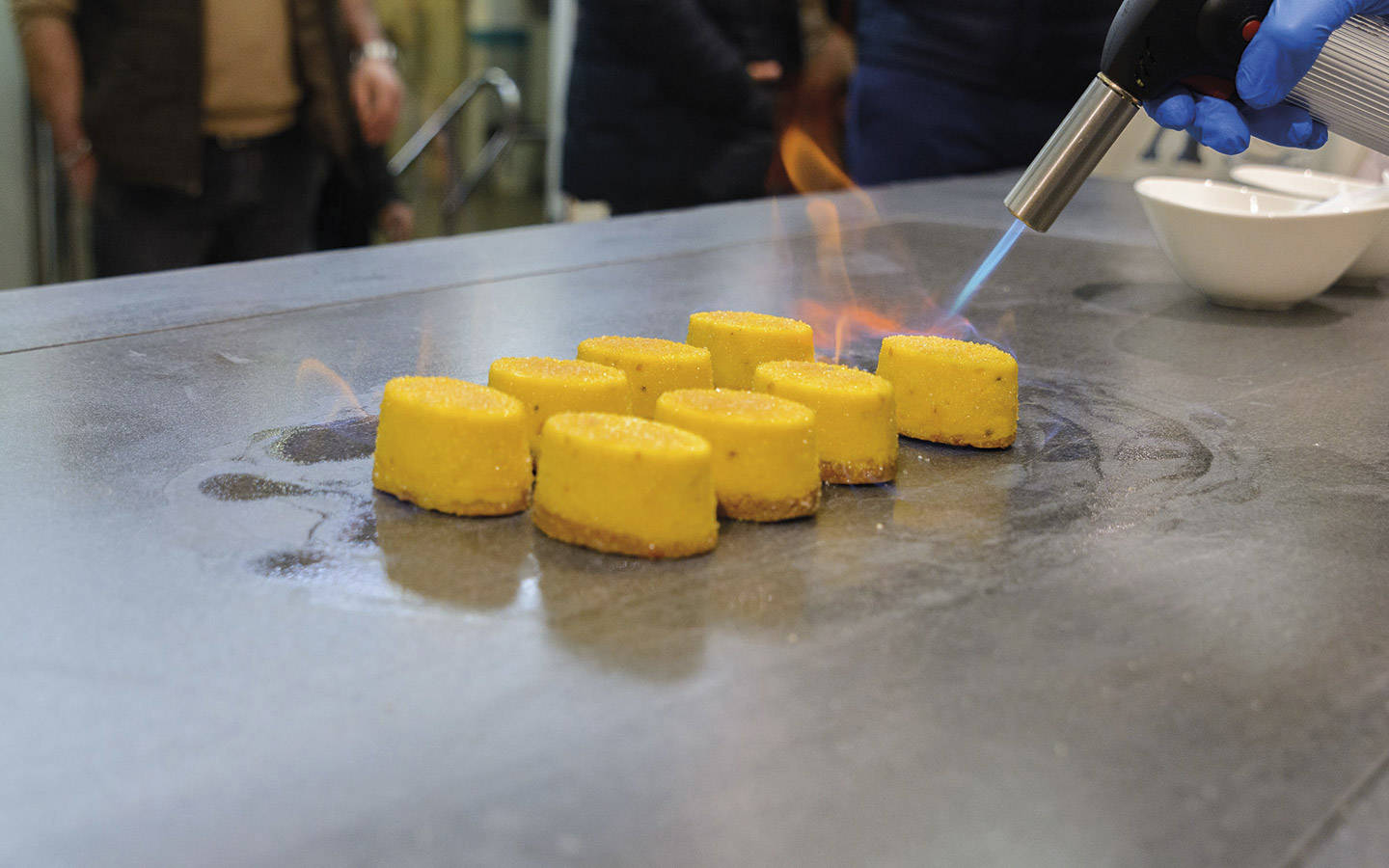 |
|
Kitchen countertops need to perform under extreme conditions. They are constantly exposed to potential scratches and scores from sharp or pointed tools. It is under these intensive conditions that porcelain excels, exhibiting one of the hardest surfaces available on the market, and maintaining a perfect surface that will not fade, or discolour or deteriorate over time. And where wood, laminate and quartz countertops suffer continual damage from scratching, porcelain’s tough surface can withstand daily wear and tear.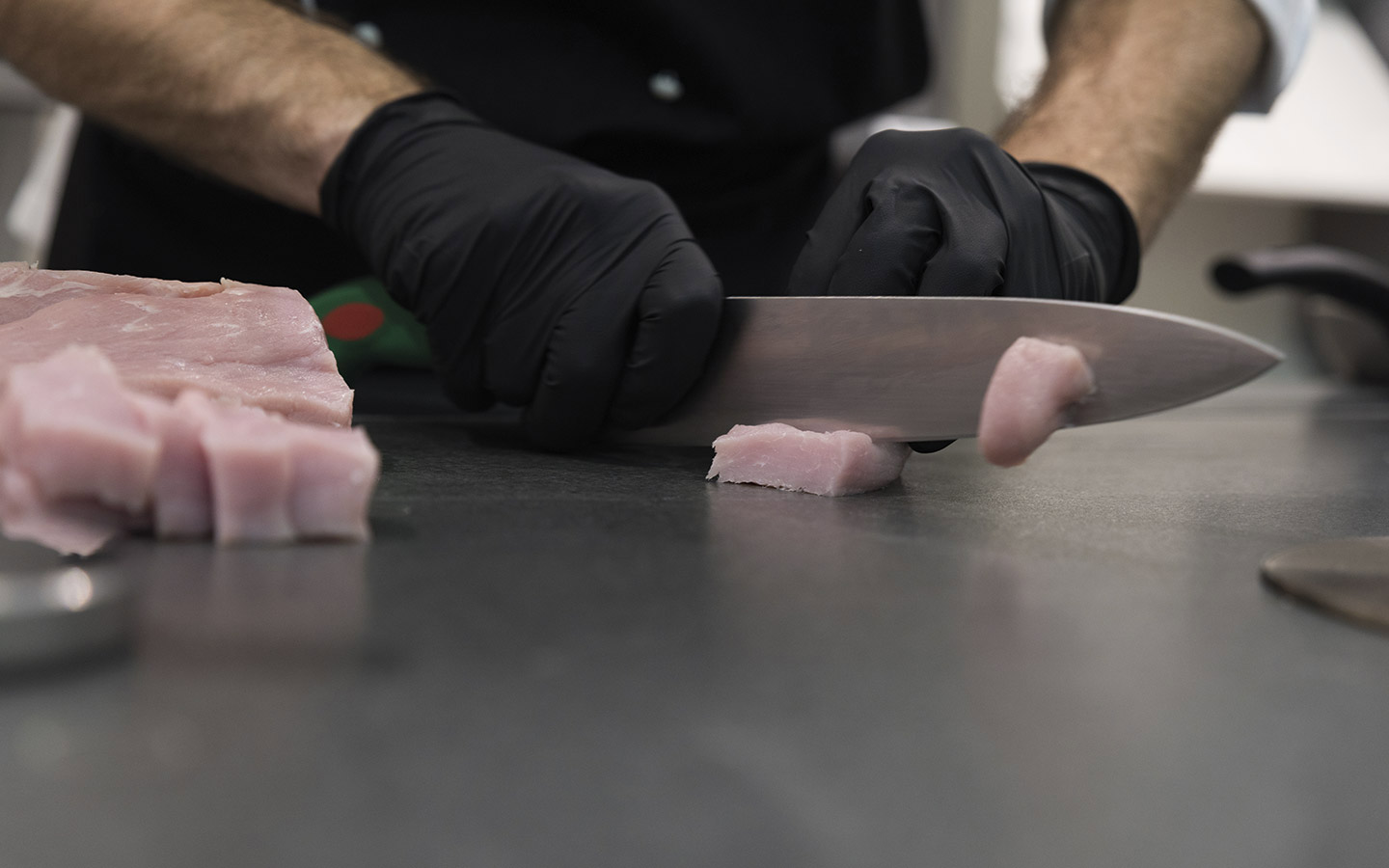 |
|
Scientific evidence has demonstrated that porous materials foster bacterial proliferation more than non-porous materials. As porcelain is a compact, non-porous material, it is particularly suitable for food preparation surfaces in the kitchen, and other situations sensitive to hygiene. Porcelain is also NSF certified, meeting the highest standards for safety, quality, sustainability or performance.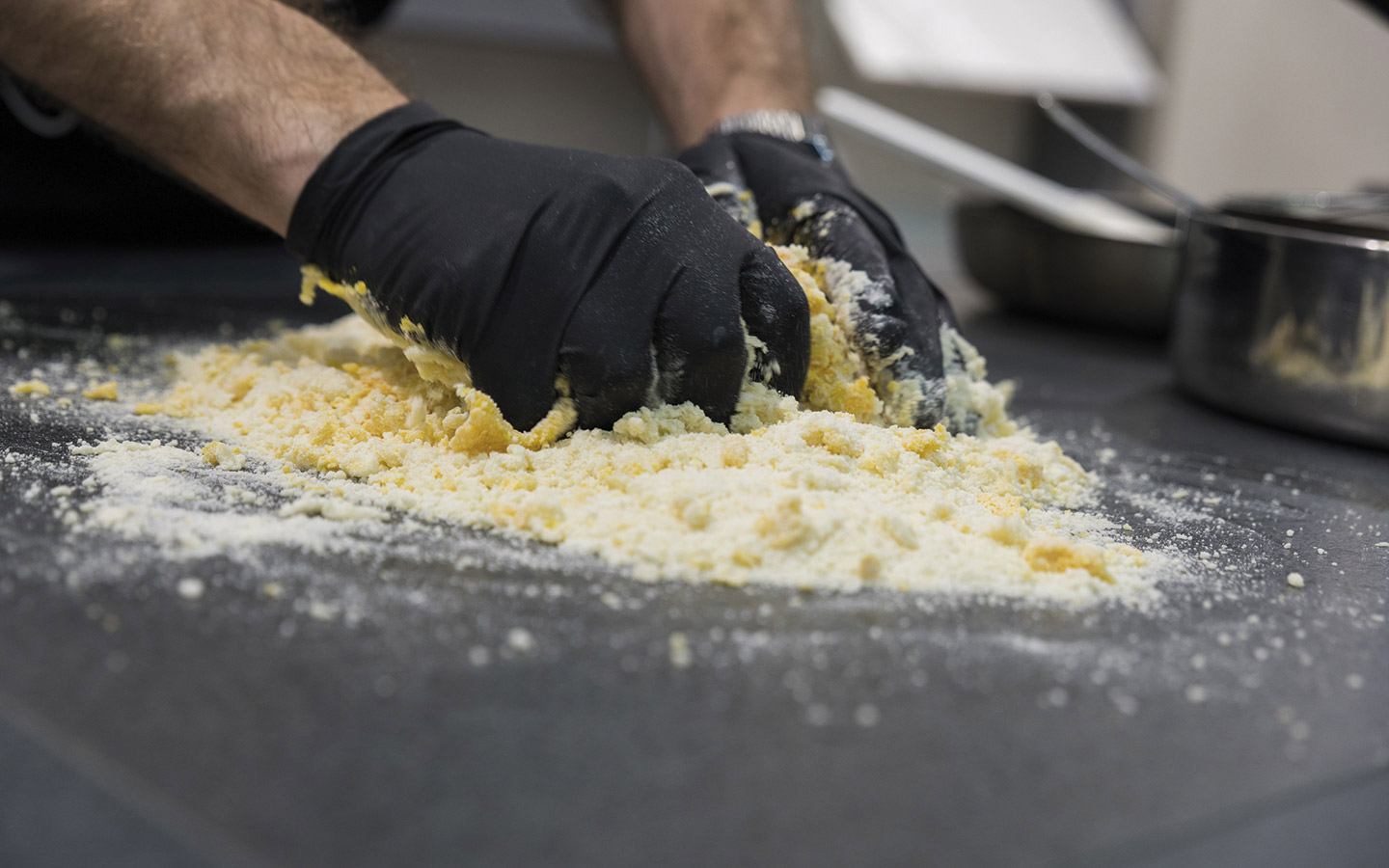 |
|
| Porcelain is extremely compact and non-porous, not allowing liquid or air to pass through it. This makes it the ideal choice for kitchen countertops. As the material is impenetrable, even the most difficult stains can be easily removed: not only oil, wine, sauces and coffee, but also acidic substances such as lemon, vinegar or residues of detergents. These substances can be easily wiped off without the use of chemical products. This reduces the environmental impact further as chemical products are no longer required. View more in the video below.
|
|
Cooking Top Applications
High performance porcelain stoneware countertops have been designed to perform under extreme conditions suitable for all cooking top technologies.
Induction Cooktop Technology
Combined with induction cooktop technology, porcelain countertops provide a clean invisible cooking surface. With induction burners installed directly beneath your countertop, their magnetic field heats the pan directly rather than heating the surface.
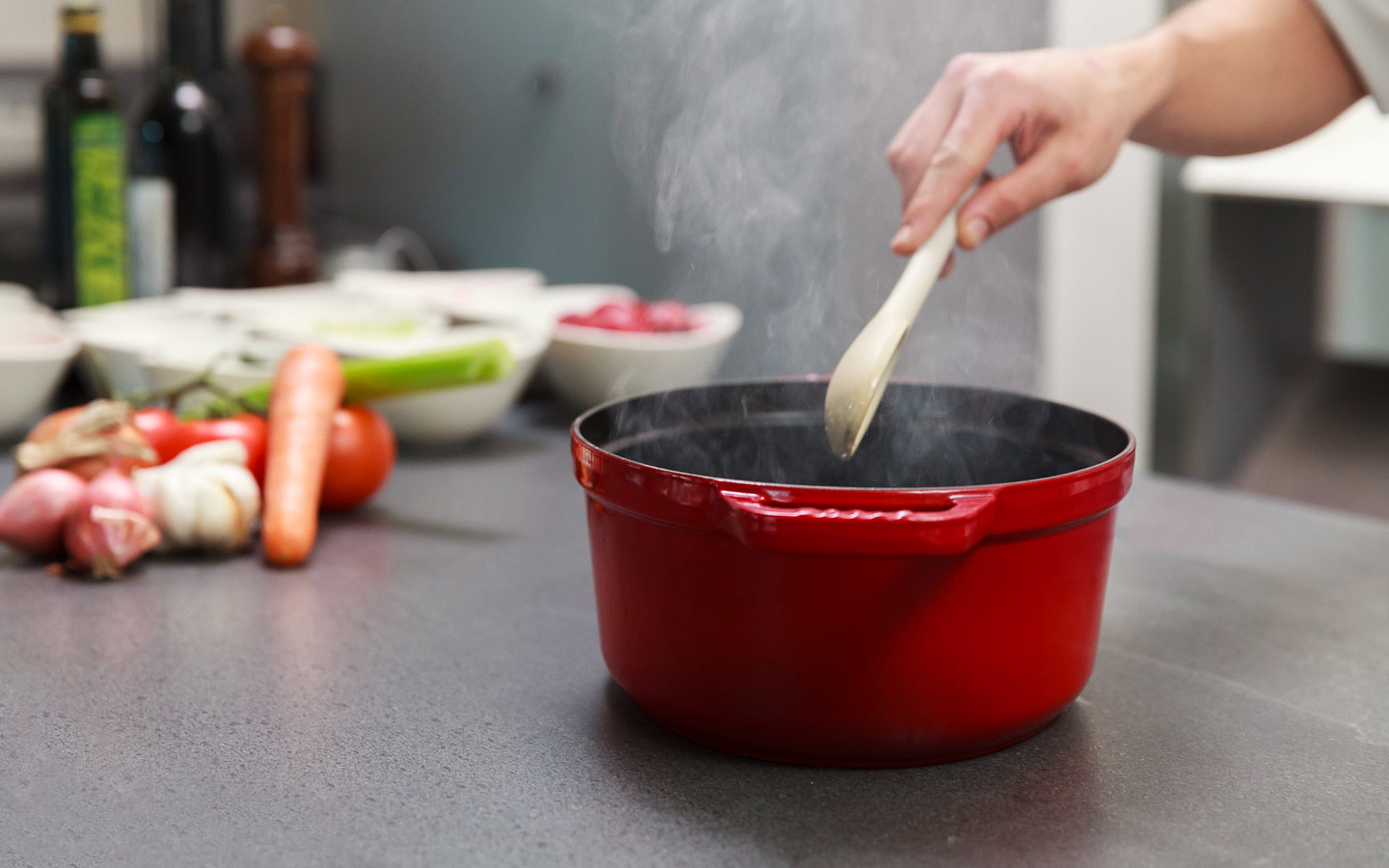
Induction technology with under-counter mounted burners
High precision CNC cutting can accommodate the latest touch displays and control buttons and provide space for the largest professional cooktops.
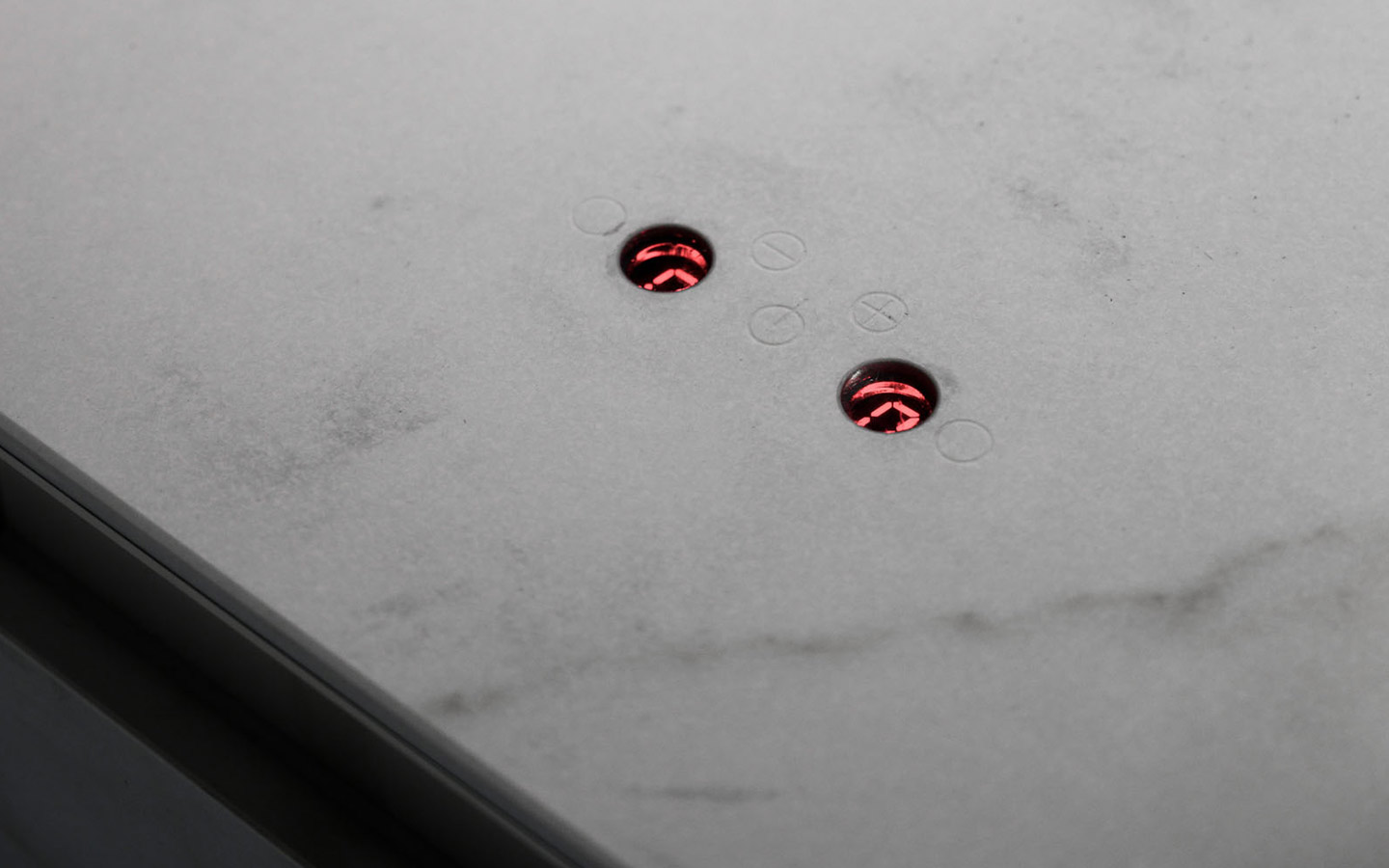
Flush-mounted controls
Because the surface remains cool, with only residual heat from the pan, there’s no burnt-on food and the area remains available as counter space when you are not cooking.
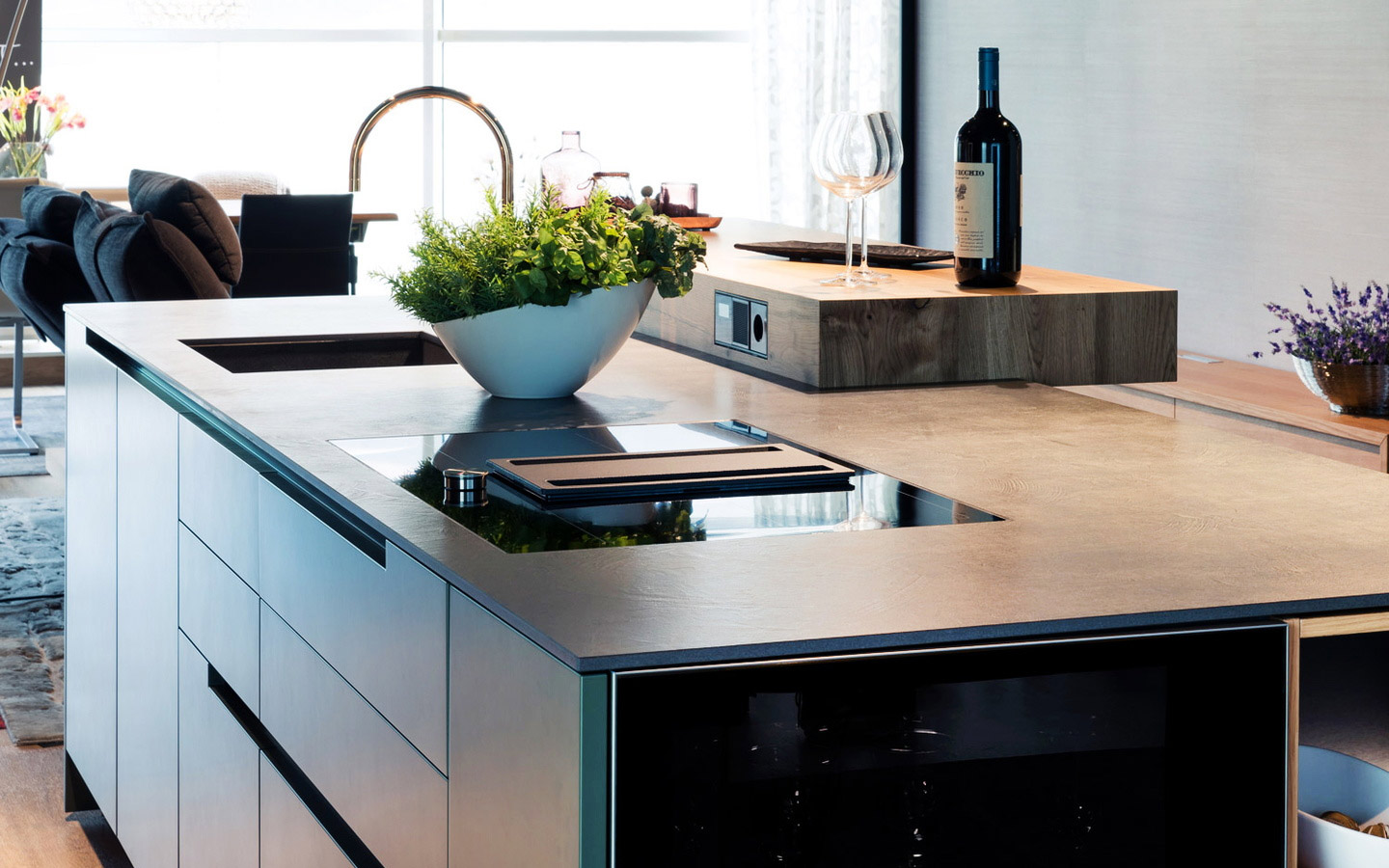
Flush-mounted induction cooktop with downdraft ventilation
Modular Cooktops
Design the cooking area into your ideal culinary scenario by seamlessly integrating modular appliances such as Tepanyaki, induction woks, deep-fat fryers, griddle plates, barbecue grills and countertop extractors.
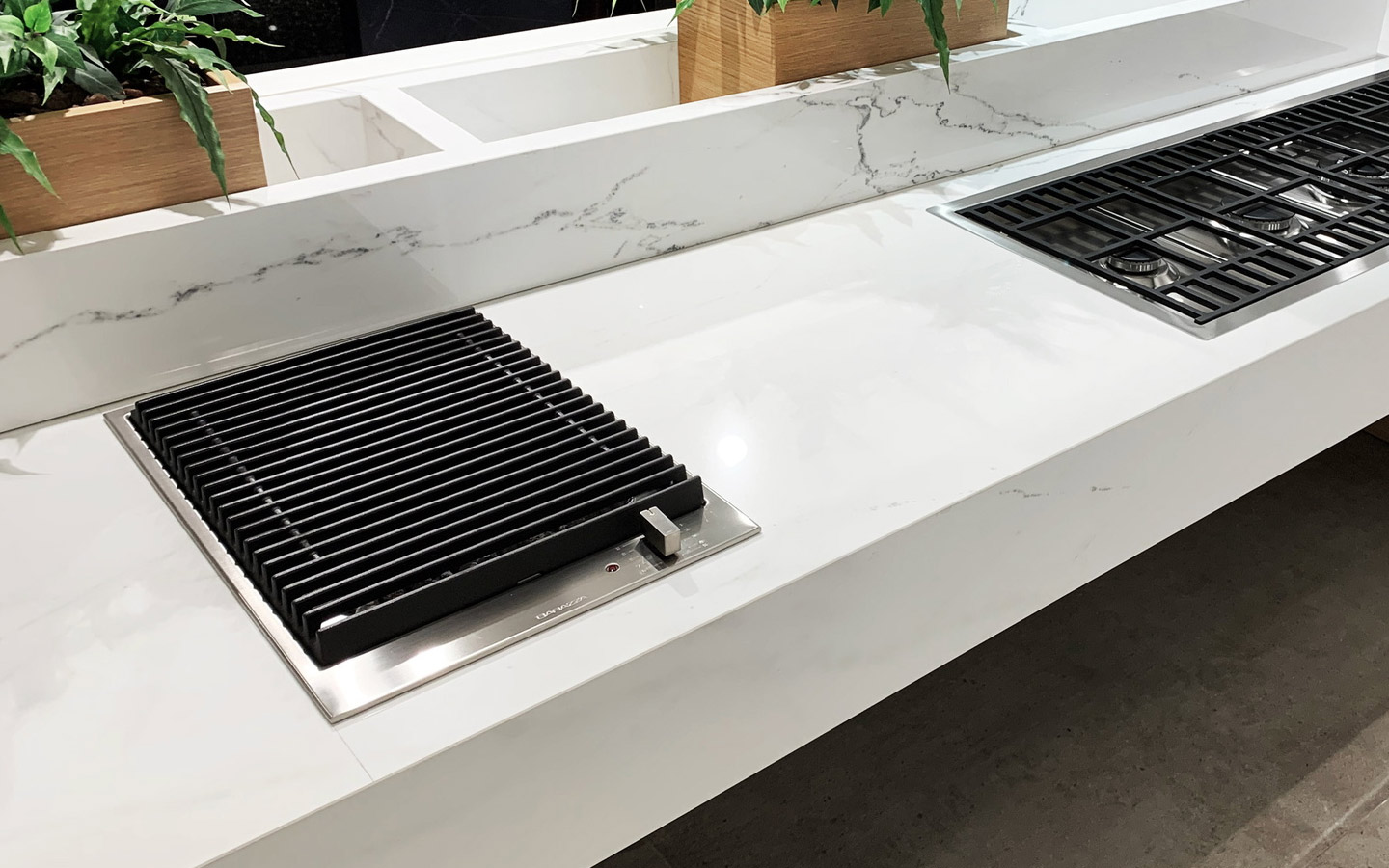
Ideal for integrated modular appliances
Single Gas Burners
While fully bespoke layouts can be created both for the home and the professional kitchen, with single gas burners installed directly onto the worktop. Pair with a table or downdraft ventilation solution for fully contained islands.
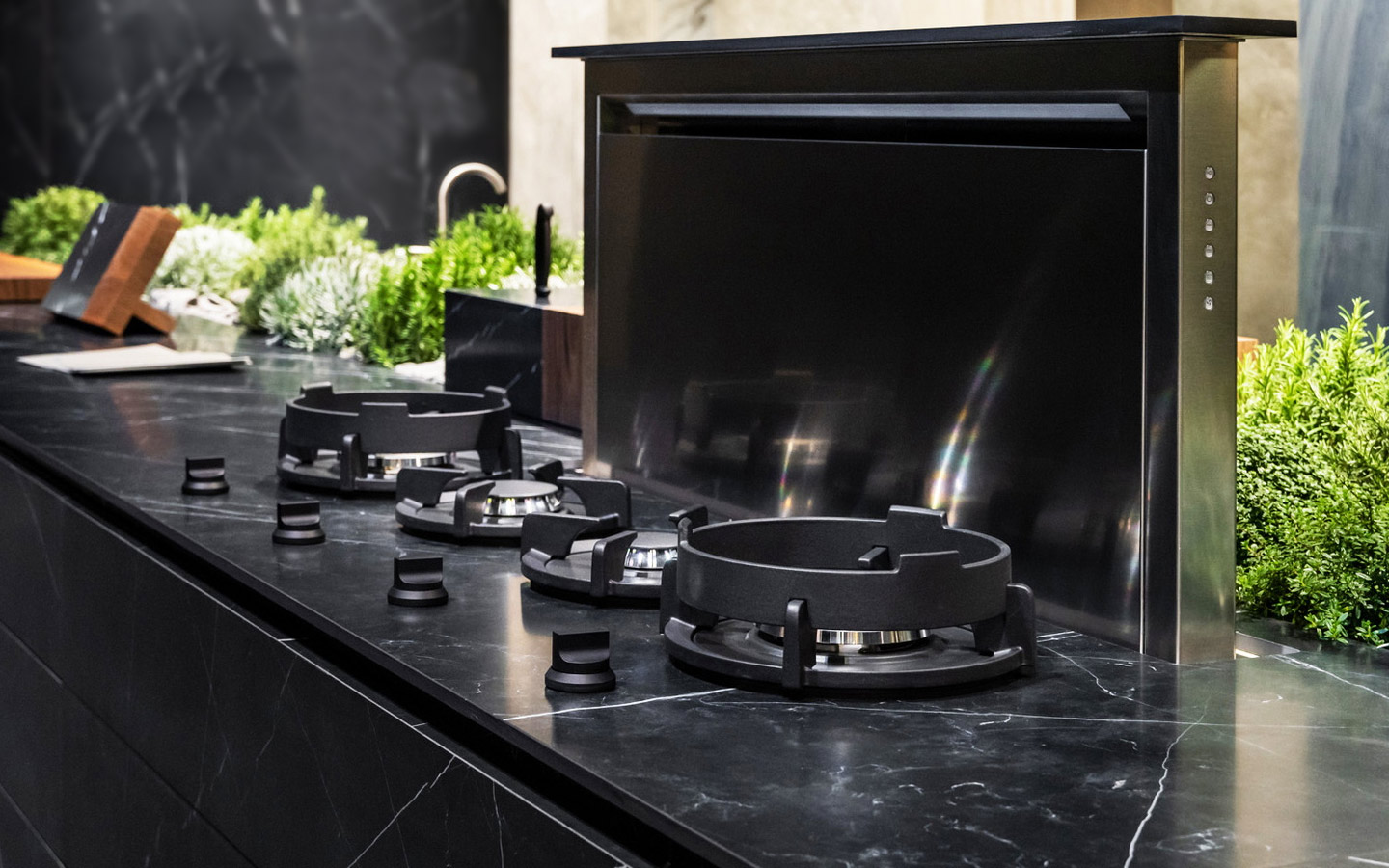
Bespoke single gas burner layout
Surface Cooktops & Hobs
Porcelain countertops can be specified for use with framed or frameless appliances offering a streamlined designer look with professional grade capability. And with over 150 colours that can be continued across splashbacks, walls and floors for one uniform design, you can create a kitchen that delivers on both the aesthetic and functional experience.
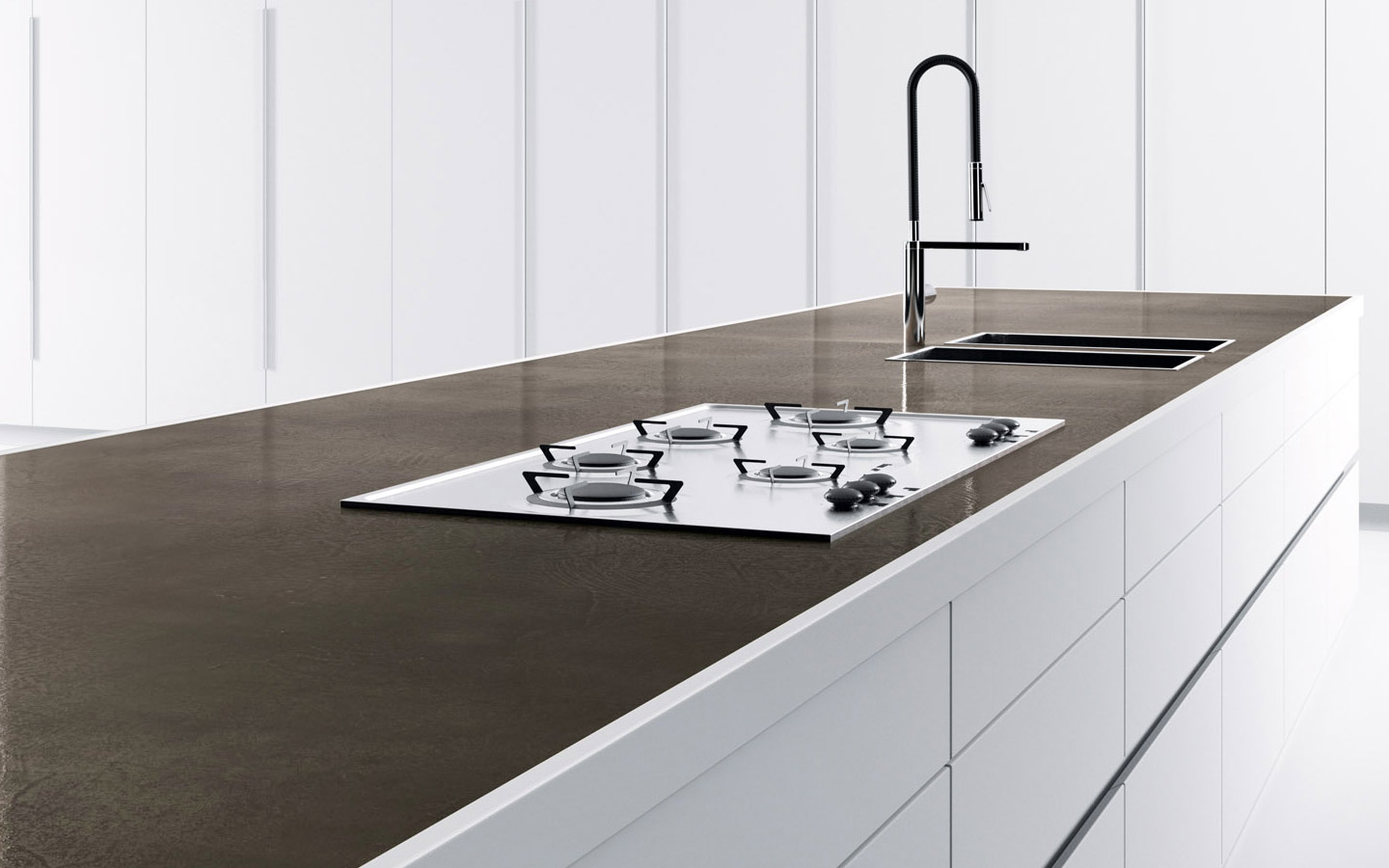
Surface-mounted gas hob
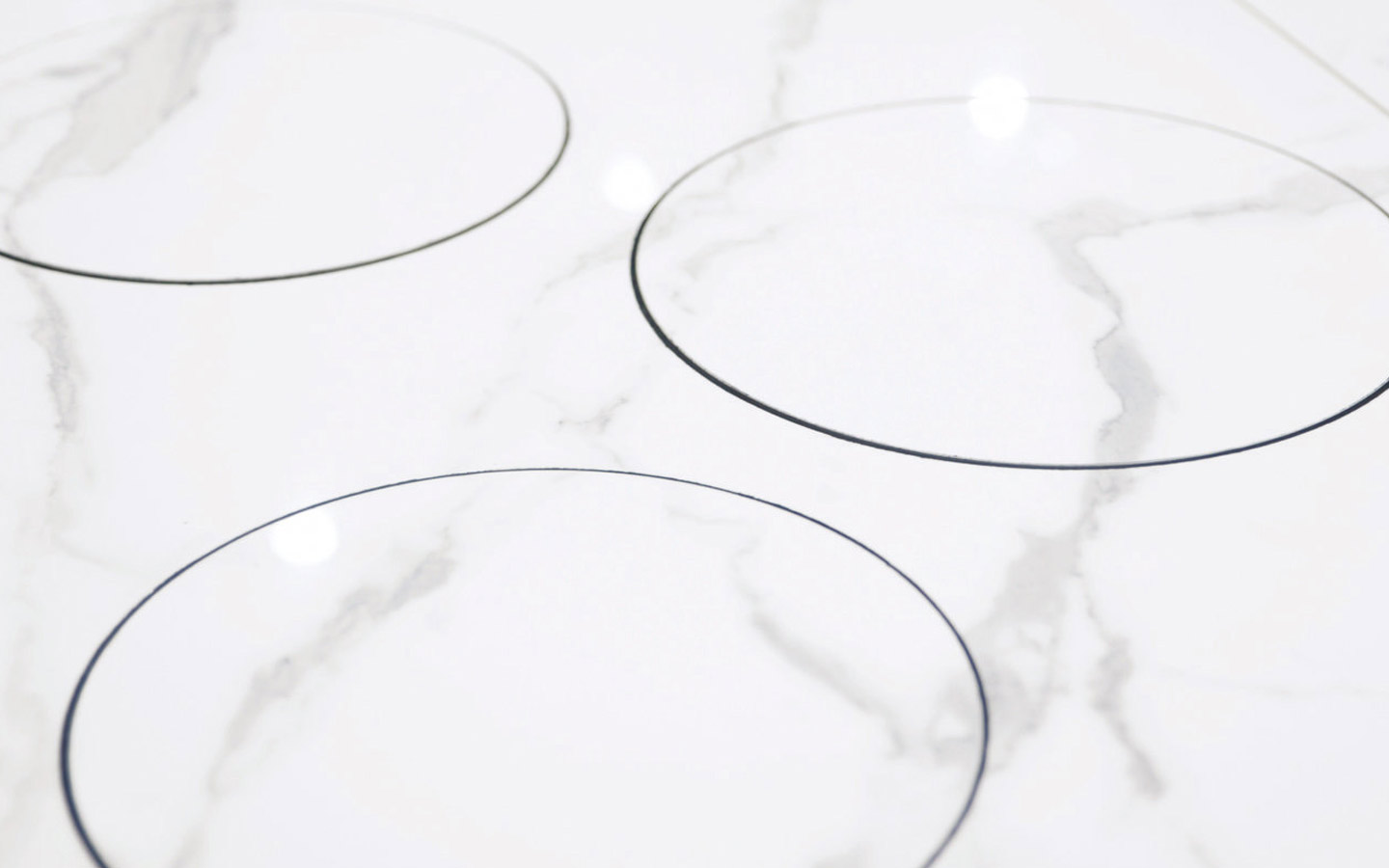
CNC cut induction hot plates
| Dimensions | |||
|---|---|---|---|
| Dimensions (cm) | 300 x 150 150 x 150 75 x 150 |
328 x 154 | 328 x 154 |
| Thickness (mm) | 6 | 12 | 20 |
| Weight | 14 kg per m2 | 28 kg per m2 | 47 kg per m2 |
| Rectified | |||
| Specification | |||
|---|---|---|---|
| Test Method | Required Value | Result | |
| Water absorption | ISO 10545-3 | ≤ 0.5 % | TM12: 0.02% TM6 Natural: 0.03% – 0.06% TM6 Polished: 0.05% – 0.08% |
| Deep abrasion resistance | ISO 10545-6 | ≤ 175 mm³ | TM6: 140 mm³ TM12: 127mm³ |
| Stain resistance | ISO 10545-14 | Testing method available | Class 5 (Resistant to stain) |
| Resistance to chemical products | ISO 10545-13 | Minimum Class B | Conforms |
| Resistance to thermal shocks | ISO 10545-9 | Testing method available | Resistant |
| Frost resistance | ISO 10545-12 | No sample must show alterations to surface | Frost proof |
| Glossary of terms | |||
|---|---|---|---|
| This glossary serves as a reference for the technical data listed above and contains data provided by the International Organisation for Standardisation (ISO). | |||
| Water absorption | ISO 10545-3 | ||
| Low Density Dry pressed tile with a water absorption rate of more than 7% |
|||
| Medium Density Dry pressed tile with a water absorption rate between 3% and 7% |
|||
| High Density Dry pressed tile with a water absorption rate between 0.5% and 3% |
|||
| Extreme Density Dry pressed tile with water absorption of 0.5% or less. This is where porcelain stoneware is categorised. |
|||
| Deep abrasion resistance | ISO 10545-6 | ||
| This is a scale of hardness ranging from 1 to 10 used to determine a material’s scratch resistance. The Mohs scale uses ten fairly common minerals of known hardness and gives each of them a relative value of 1-10. Each mineral in the scale will scratch those with lesser values and will not scratch those with higher values. Porcelain stoneware is considered to have a Mohs rating of 8. | |||
| Mohs scale | Mineral | Countertop surface | |
| 1 2 3 4 5 6 7 8 9 10 |
Talc Gypsum Calcite Fluorite Apatite Feldspar Quartz Topaz Corundum Diamond |
Vinyl Wood countertops Marble countertops, Laminate countertops Marble countertops, Bauxite countertops (Corian) Granite countertops Granite countertops, Stainless steel blade Quartz or Quartzite countertops Porcelain countertops No countertop is this hard No countertop is this hard |
|
| Stain resistance | ISO 10545-14 | ||
| This test measures the resistance to staining of a surface. Staining tests are achieved by prolonged exposure of the surface to test solutions and dry staining agents. The surface is visually evaluated after the staining agent has been cleaned off using a combination of cleaning procedures. | |||
| Class 1 Class 2 Class 3 Class 4 Class 5 |
Stain is not removed The stain is removed using solvent, such as acetone The stain is removed using a strong commercial cleaning agent The stain is removed using a weak commercial cleaning agent The stain is removed using hot water |
||
| Frost resistance | ISO 10545-12 | ||
| Frost resistance determines whether or not a tile is suitable for outdoor applications in colder climates. When a tile absorbs a large quantity of water and the volume increases from freezing, the tile can break. This test consists of soaking the tiles in water and subjecting them to temperature cycles from +51˚C to -51˚C (+123.8˚F to -59.8˚F). All sides of the tiles are exposed to freezing over 100 freeze-thaw cycles. | |||